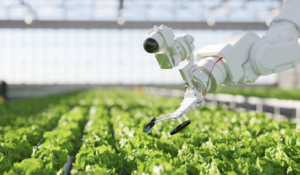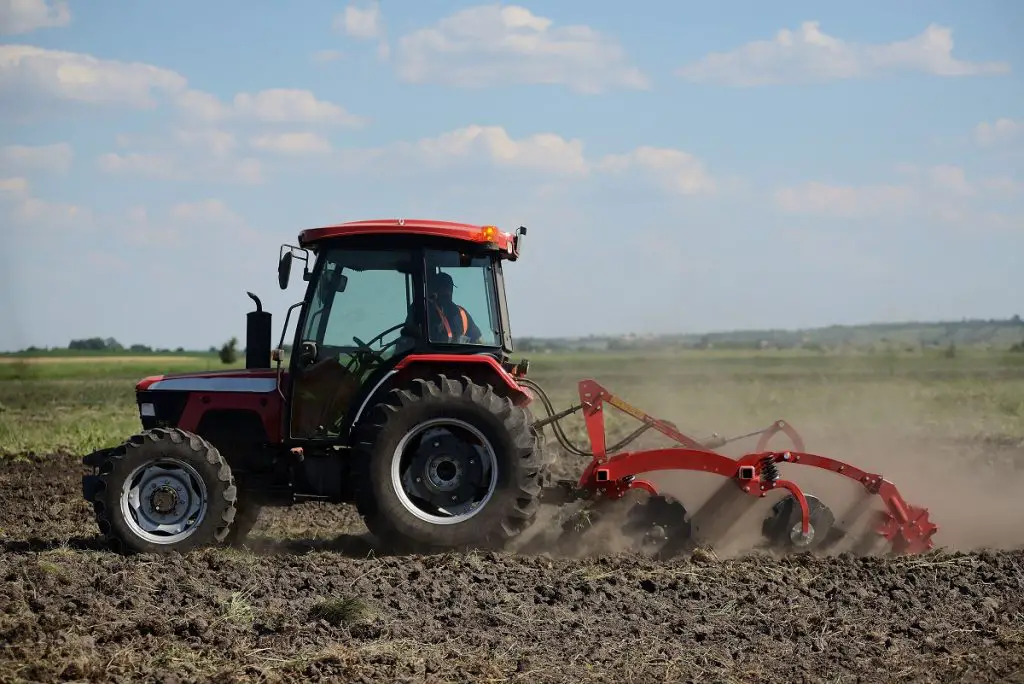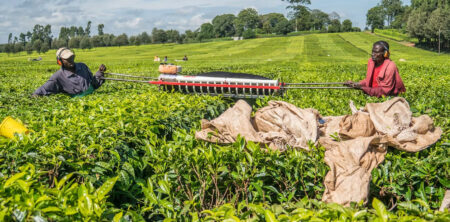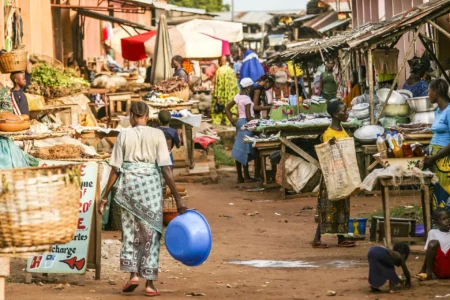With Africa’s population expected to double by 2050, the continent must embrace modern technology to increase productivity.
More than 70 per cent of Africa’s food is grown on smallholder farms with the backbreaking physical labour majorly undertaken by women. The continent’s food production involves the hoe more than it does mechanised labour leading to decreased output.
One thing to note is that mechanisation is not limited to tractors but it also includes irrigation systems, food processing and related technologies and equipment in the agricultural production chain.
Read: COVID-19: Millions of smallholder farmers facing tough times ahead
According to the Food and Agriculture Organisation (FAO), agricultural mechanisation is the application of mechanical technology and increased power to agriculture to enhance the productivity of human labour and often to achieve results well beyond the capacity of human labour.
This includes the use of tractors of various types as well as animal-powered and human-powered implements and tools, and internal combustion engines, electric motors, solar power and other methods of energy conversion.
Mechanisation also includes irrigation systems, food processing and related technologies and equipment.
In consideration of all these factors, mechanisation on farms in Africa is very low where the number of tractors in Sub-Saharan Africa (SSA) region range from 1.3 per square kilometre in Rwanda to 43 per square kilometre in South Africa, according to the United Nations.
In comparison, India has 128 tractors per square kilometre and 116 per square kilometre in Brazil.
FAO notes that Africa overall has less than two tractors per 1,000 hectares of cropland while there are 10 tractors per 1,000 hectares in South Asia and Latin America.
A report published by the Malabo Montpellier Panel in July 2018 shows that more needs to be done to meet the continent’s future food demands while accelerating agricultural growth and transformation. The report notes that technological strategies and innovations along the food value chain could help to meet the demands.
Mechanising Africa’s food and agriculture system
African countries with improved uptake of mechanisation along the entire agriculture value chain have achieved high agricultural growth rates and generated new off-farm employment opportunities. In contrast, the countries with limited mechanisation remain limited not only in mechanising downstream value chain segments but productivity as well.
With the increasing demand for food, mechanising Africa’s food and agriculture system needs fresh strategies to raise agricultural land and labour productivity.
Africa is currently spending US$35 billion annually on food imports, according to the African Development Bank (AfDB). With the increasing population and if the current trend continues, food imports could cost the continent US$ 110 billion by 2050.
Read also: East Africa’s budding cotton sector poised for growth
Africa controls 60 per cent of the world’s arable land yet it continues importing foodstuff due to the lack of technologies to achieve Africa’s green revolution. The continent also lacks supportive policies for the millions of smallholder farmers.
As an incentive, mechanising the system will make rural employment more attractive which will accelerate achieving future growth and poverty reduction agendas.
However, governments must embrace the technological, policy, and institutional innovation opportunities to make mechanisation work on the world’s biggest free trade area courtesy of the African Continental Free Trade Area (AfCFTA).
The Malabo Montpellier Panel notes that mechanisation is not just about tractors and technology but about prioritising the future development and growth agendas for the African smallholder farmer.
It is also about organisational innovations like reliable services and cooperation arrangements for and with farmers.
The report, Mechanized: Transforming Africa’s Agriculture Value Chains, is a summary of findings in a systematic analysis of what countries at the forefront of progress in mechanisation have done right.
In addition to hampered productivity which affects farm output, the continent also has the highest share of food loss and waste at 36 per cent of all harvested food.
The biggest contributor to this waste estimated at 30 per cent is poor harvest, post-harvest, processing, and packing processes. The poor and post-harvest losses could be majorly due to untimely and late harvesting leading to contamination.
Another sector of mechanisation is proper storage facilities which remain a major cause of post-harvest losses in Africa.
“Technological strategies and innovations along the food value chain could help to decrease these losses,” notes the panel.
How to hit mechanisation goals
A December 2017 brief by the International Food Policy Research Institute (IFPRI) highlighted that the private sector was key to achieving mechanisation goals.
“The experiences in both Asian and African countries suggest that the private sector is best positioned to meet the emerging demand for mechanisation throughout the supply chain—from manufacturing or importing machinery, to hiring services for farmers, fabricating and distributing attachments and spare parts, and providing machinery repair and maintenance services,” noted the brief.
IFPRI said that the public sector can play an important role in addressing key market failures by promoting private ownership of agricultural machinery. On the flip side, direct government interventions to promote mechanisation would often lead to market distortions. (https://teamdermatologymd.com)
The adoption of engine-powered mechanisation remains low on the continent since subsistence agriculture is predominant. This means that spurring development remains a challenge.
A major challenge that remains is getting finance to mechanise agriculture. Since many smallholder farmers are subsistent, they do not see it necessary mechanising or they are limited by the lack of credit.
To address some of these problems, the tech sector is making a contribution.
Last year, Hello Tractor and the Technical Centre for Agricultural and Rural Cooperation ACP-EU (CTA) partnered to support smallholder farmers access mechanisation services while increasing youth employment opportunities.
The partnership enables Hello Tractor to expand its services across Nigeria and Kenya connecting 5,000 smallholder farmers to mechanisation service.
From this partnership, best practices and lessons learned will be shared on implementing digital services for agricultural mechanisation.
In another arrangement, Kenya’s Equity Bank and AGCO signed a partnership agreement in late 2019 to help their customers get up to 80 per cent financing for Massey Ferguson tractors and accompanying implements.
With the credit payable within 48 months, the bank’s partnership with AGCO was meant to enable farmers to mechanise affordably.
Such public participation could enable the continent to hit key milestones in ensuring that its food security story changes for the better.











